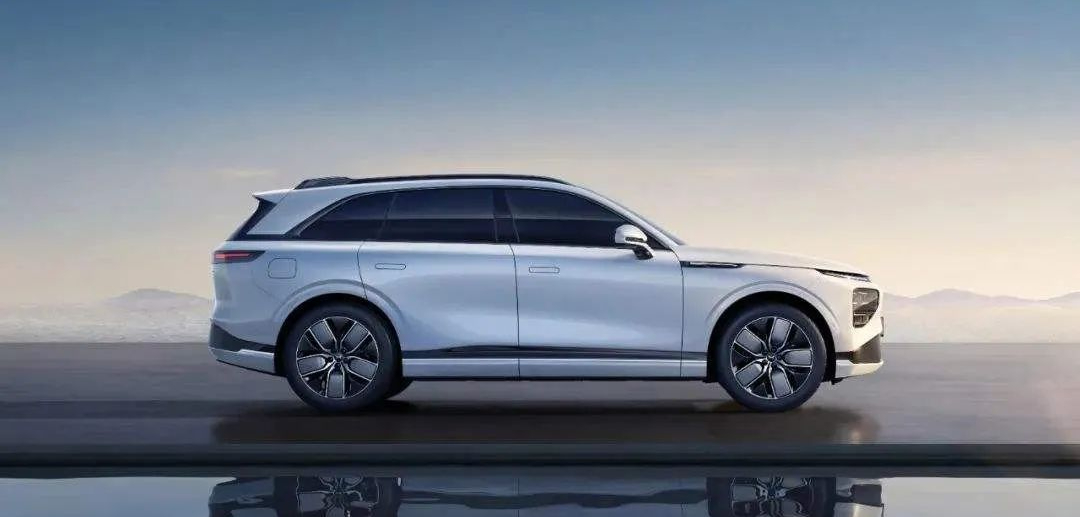Jia Haonan 发自 副驾寺
Smart Car Reference | Official Account AI4Auto
The detailed experience report on XPeng G9 is now available.
The tests were conducted on various terrains, including circuit tracks, mountain roads, and urban roads.
Advantages: stable chassis, significantly improved driving performance, and still leading in intelligence.
Disadvantages: minor suspension flaws, redundant cabin functions, and inconsistent steering and braking with powertrain.
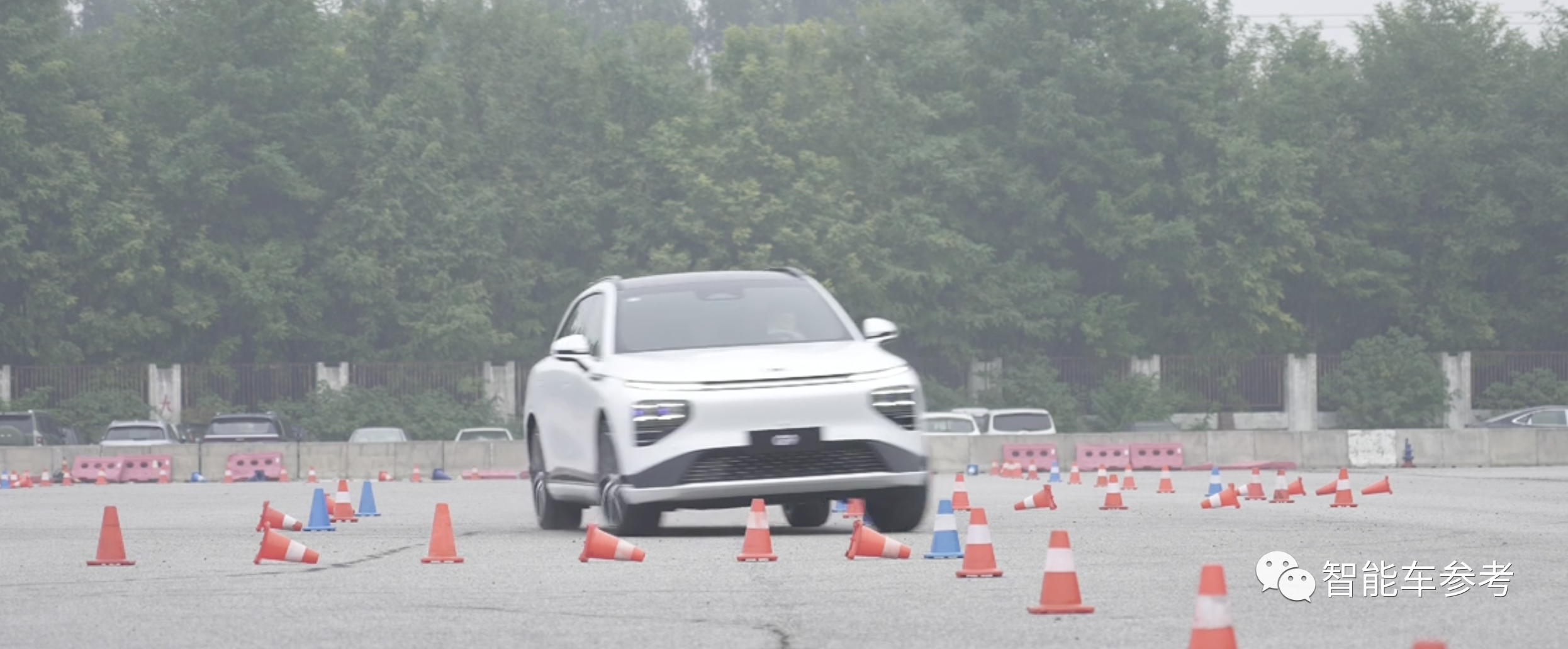
XPeng modestly claims that its “best” models are priced under 500,000 yuan, but in reality, it can compete directly with Porsche Cayenne.
Believe it or not, XPeng G9 indeed has differentiated advantages over Porsche Cayenne.
Comparison between XPeng G9 and Porsche Cayenne
The performance tests mainly include 0-100 km/h acceleration, braking performance, high-speed slalom test, and high-speed continuous bumps.
The compared models are Porsche Cayenne 2018 2.9T high-power version, with 440 horsepower, 550Nm maximum torque, and a new car price of 1.15 million yuan.
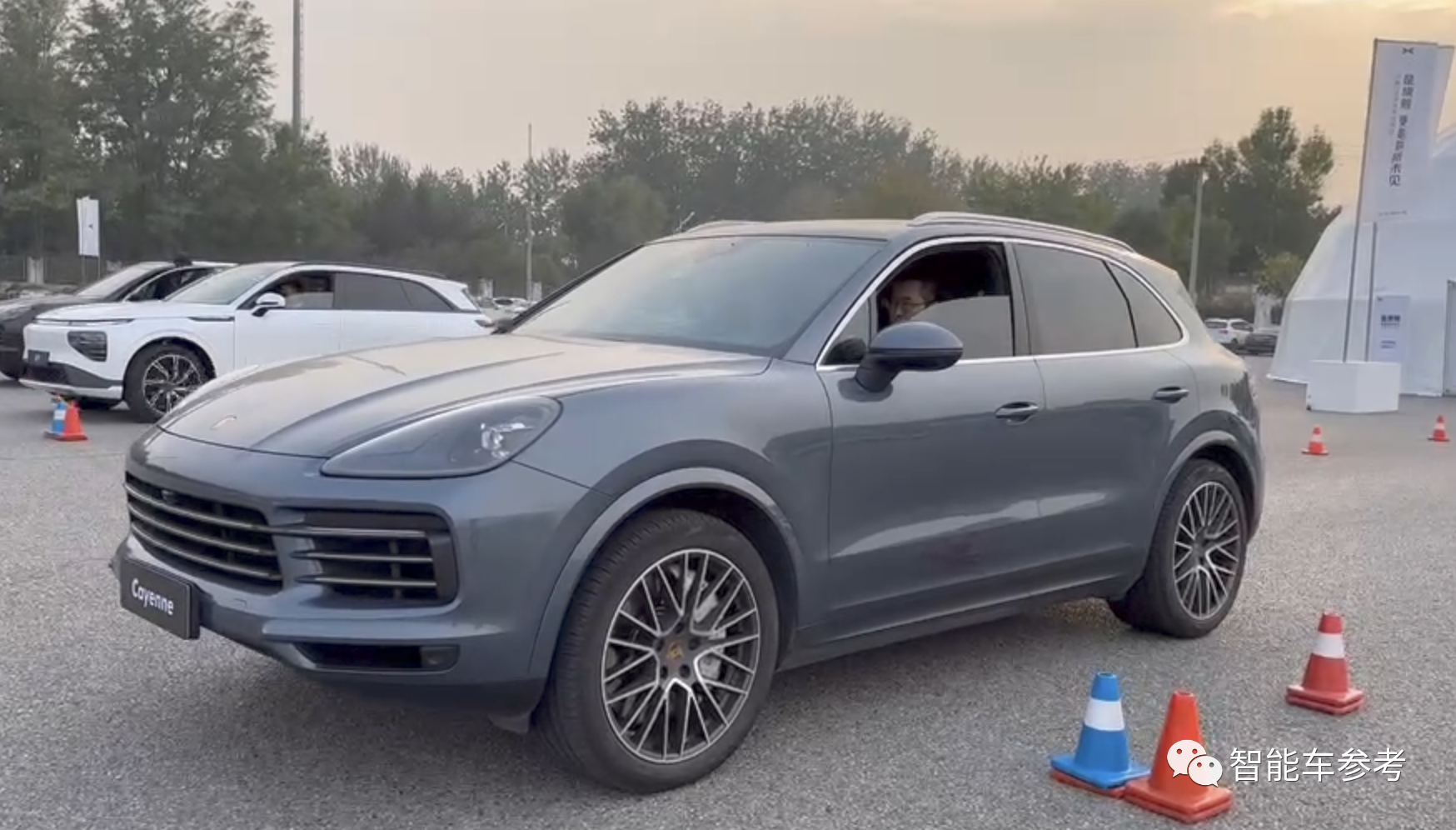
The XPeng G9, on the other hand, is the performance version with a range of 650km, intelligent four-wheel drive, 405 horsepower, 717Nm maximum torque, and a price of 399,900 yuan.
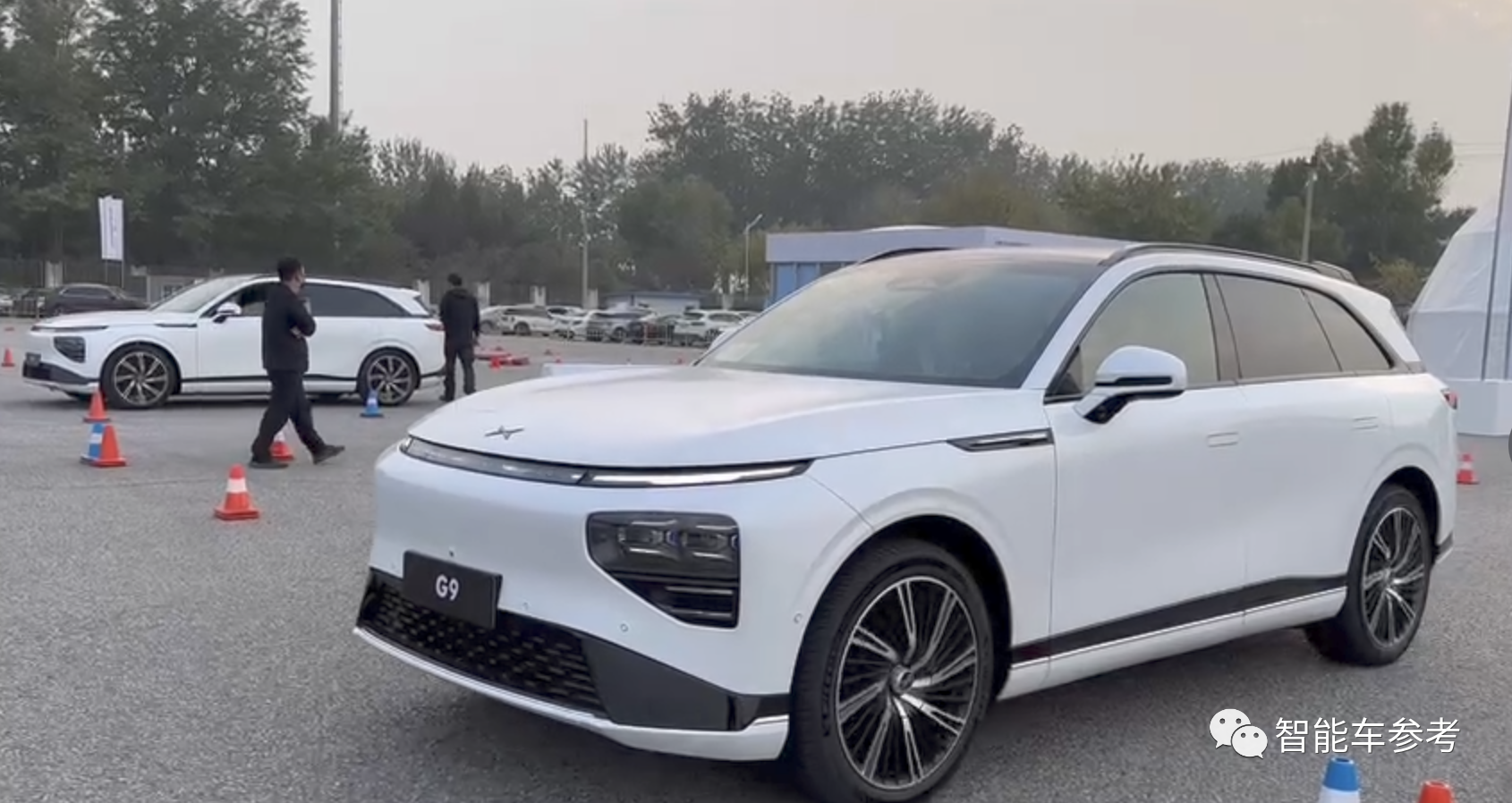 ### Level 1: Zero-to-Hundred Acceleration
### Level 1: Zero-to-Hundred Acceleration
In terms of perceived acceleration and actual test results, the Xpeng G9 is much faster than the Porsche Cayenne.
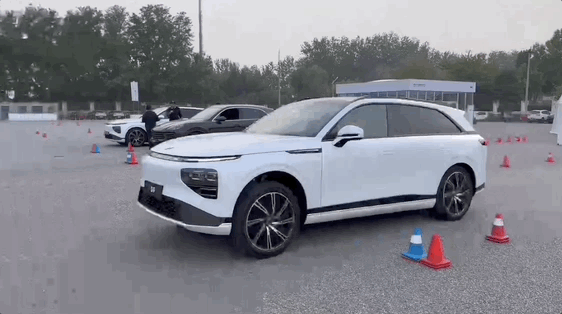
Official data from both cars show that the Xpeng G9 takes 3.9 seconds, while the Porsche Cayenne takes 5.2 seconds.
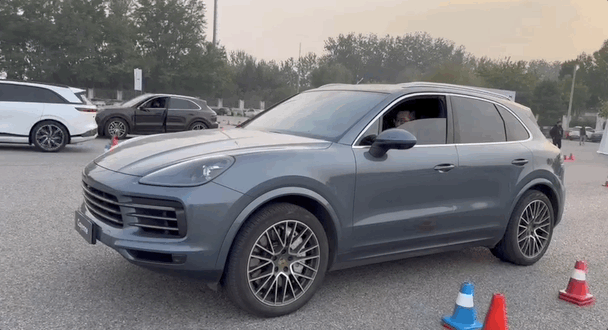
Electric motors have the inherent advantage of releasing high torque at low speeds, while a gasoline engine needs a process to reach the optimal power and torque output speed.
However, the Xpeng G9 loses in terms of its steering wheel.
Tuned for family use, the Xpeng G9’s steering wheel feedback is particularly strong under speed gains, feeling more compact as speed increases. However, in sport mode, the curve of the steering wheel’s weight change is extremely steep.
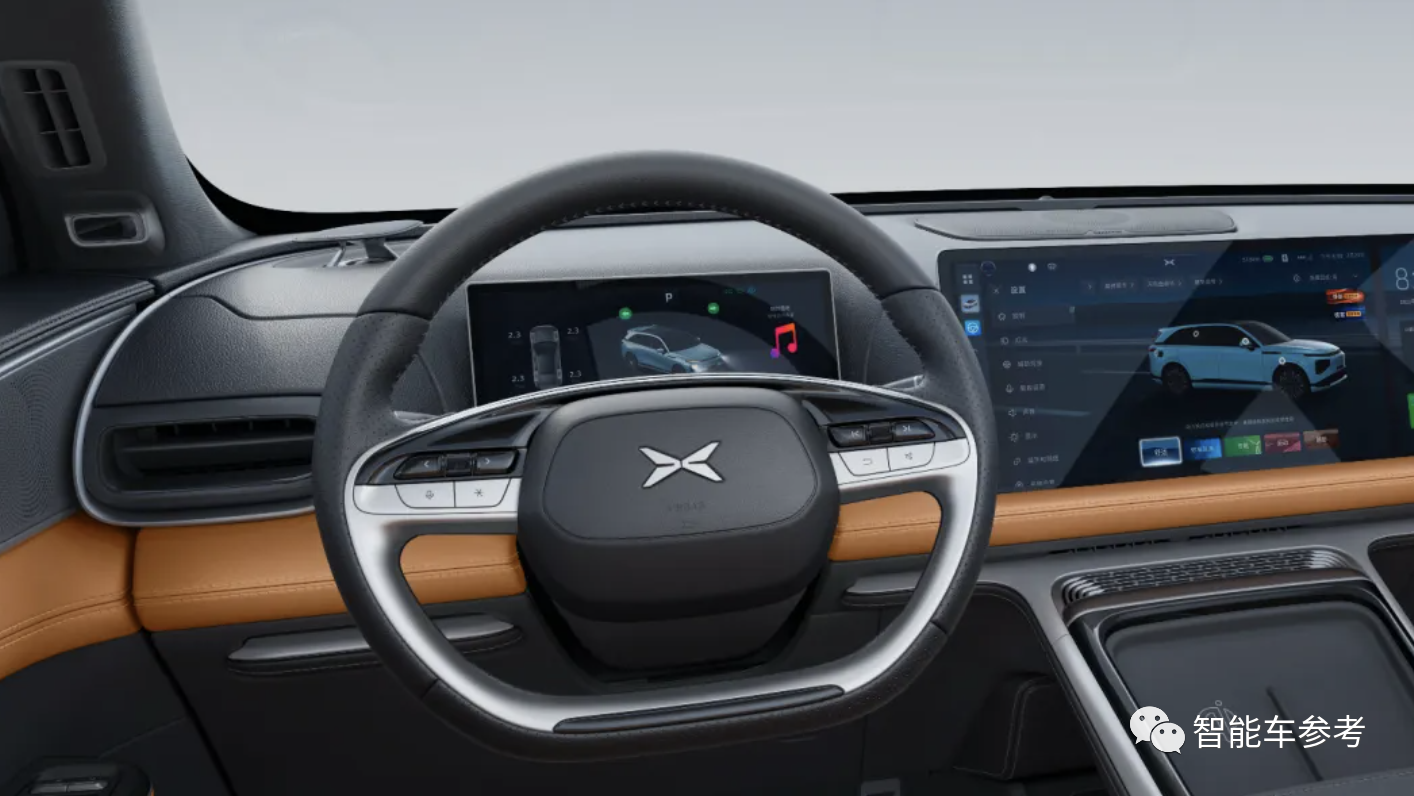
When the steering is switched to sport mode, the steering wheel remains light as a feather during the initial stage of the acceleration, and any unintentional movement can easily turn the steering in the wrong direction, particularly in the high-stress state of zero-to-hundred acceleration.
The danger lies in the fact that the G9’s power is too strong, leaving very little room for error.
The Porsche Cayenne has achieved the driver control characteristics that a sport-oriented vehicle should have, giving the driver ample confidence.
Level 2: Braking Characteristics
The Xpeng G9 has a longer stopping distance at 100km/h than the Porsche Cayenne, and its strength is also soft, while the Cayenne’s braking is unambiguous, fierce, and direct, giving it the “hitting a wall” feeling.
The Xpeng G9’s performance is also closely linked to its family orientation.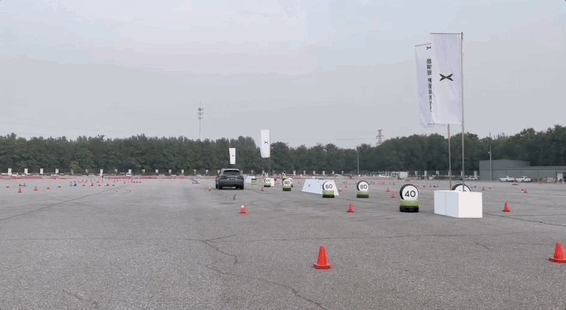
However, this cannot be considered a disadvantage.
In daily driving scenarios, the braking distance of the G9 still remains at 36-38 meters, which performs relatively well among medium and large SUVs.
Moreover, the braking of the G9 is linear and uniform, and it can even be said to be very comfortable in daily use.
It’s nothing like many new car models nowadays that make the brakes feel overly soft with sudden heavy braking when the pedal passes a critical point.
Level 3: High-speed Slalom
In the high-speed slalom test, due to the safety measures of the venue, it was not possible to perform elk tests at the limit speed. Therefore, we could only experience the vehicle’s response and attitude.
At a speed of 50-60 km/h, both the G9 and the Cayenne can pass the slalom section, which is about 6 meters wide.
However, the stability and response speed of the G9 are superior to the Cayenne.
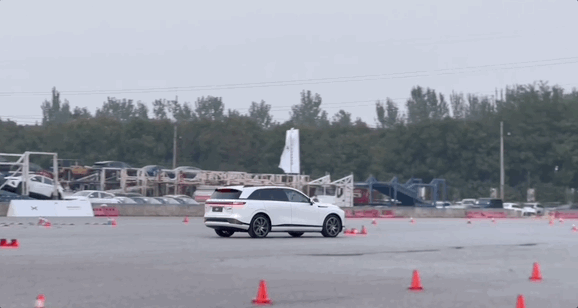
This is mainly because the G9’s dual-chamber air suspension can lower the ground clearance and adjust the suspension support characteristics in real-time according to the vehicle’s dynamics.
The Cayenne loses mainly because of its larger ground clearance and traditional shock absorber suspension.
Of course, looking at the form of the chassis suspension, both the front and rear of the Cayenne are multi-link, and their limit conditions, tuning level, and response speed are theoretically much higher than those of the G9 for household use.
However, in less sporty scenarios, the G9 wins over traditional cars with technology.
Level 4: High-speed Passing Through Dense Speed Bumps
The same factors also allow the G9 to provide a better experience than the Cayenne on high-speed continuous bumpy road sections.In the area of dense speed bumps with an interval of about 20cm, the Porsche Cayenne can be summarized as follows: the faster it goes, the more bumpy the ride gets, and the louder the noise from the suspension becomes.
In fact, the suspension of the Cayenne can stabilize the body at medium to high speeds when going over bumps. However, due to the stiff chassis, the impact is too intense, causing your backside to meld with the car and feel the same shock.
The advantage of the air suspension of XiaoPeng G9 is clearly demonstrated. At 60 km/h, and even higher, the feeling inside the car is even smoother than when driving slowly over a speed bump, and the sound is low, deep and crisp.
You can feel clear vibrations inside the car, but your backside won’t move, and you won’t be thrown off the seat.
To sum up, the XiaoPeng G9 has a sufficiently sporty suspension system and has strong power. However, its steering and brake system do not match its athletic abilities.
The current driving experience is fully capable of supporting occasional aggressive driving in daily life. In comparison with Porsche, the steering and braking characteristics of the G9 are not sporty enough indeed.
But the precision of the steering, including the degree of humanization and rationality of the gain with the angle and speed, as well as the excellent braking performance in daily use scenarios, are all very good.
To put it this way, take the G9 to run in the mountains, not only it doesn’t feel out of place, but its dynamic performance and driving pleasure far exceed the starring players like Touareg, Highlander, and URV in the past medium-to-large SUV group.
However, if I really want to go to the racetrack, I’ll still choose Porsche.

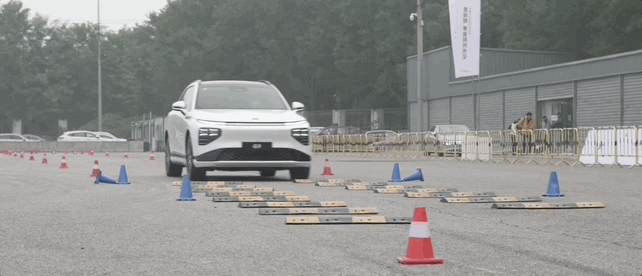
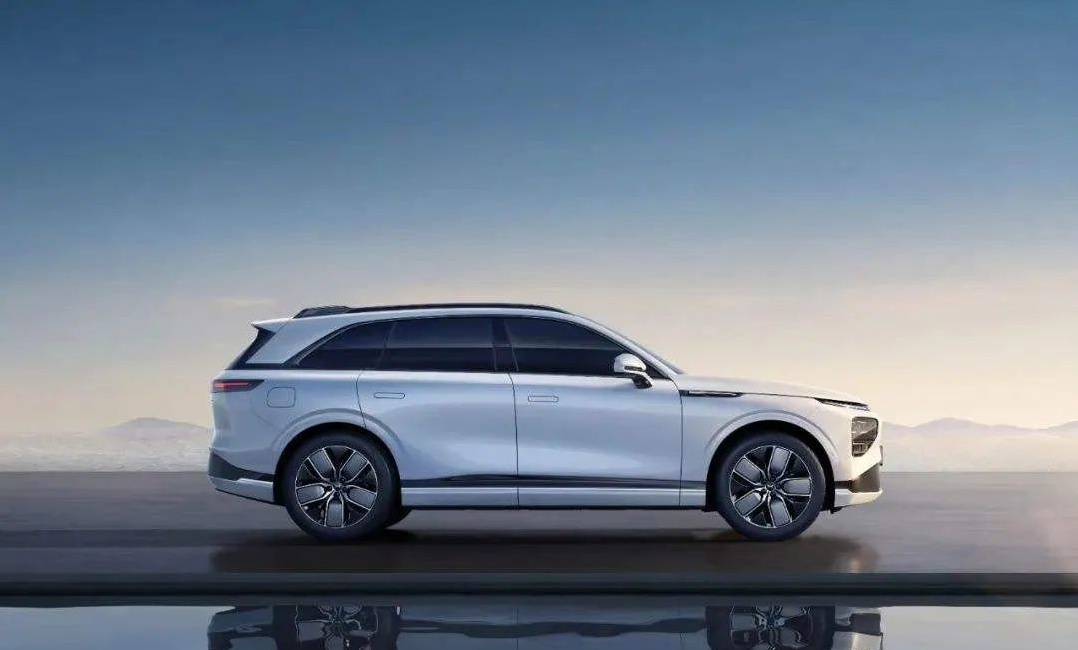 ## Smart Experience
## Smart Experience
Smart Cockpit
In terms of the intelligent cockpit, in terms of hardware, the cockpit is equipped with dual 14.96-inch high-definition smart screens with Qualcomm Snapdragon 8155 chips.
Xmart OS, which is independently developed by XPeng, has also reached a new stage, especially in terms of human-computer interaction.
The response time of voice interaction is up to milliseconds, and it can give 40 instructions continuously in one minute and execute them quickly. Moreover, the vehicle can be voice-controlled in no-network or weak-network conditions such as underground garages, highways, and wild areas.
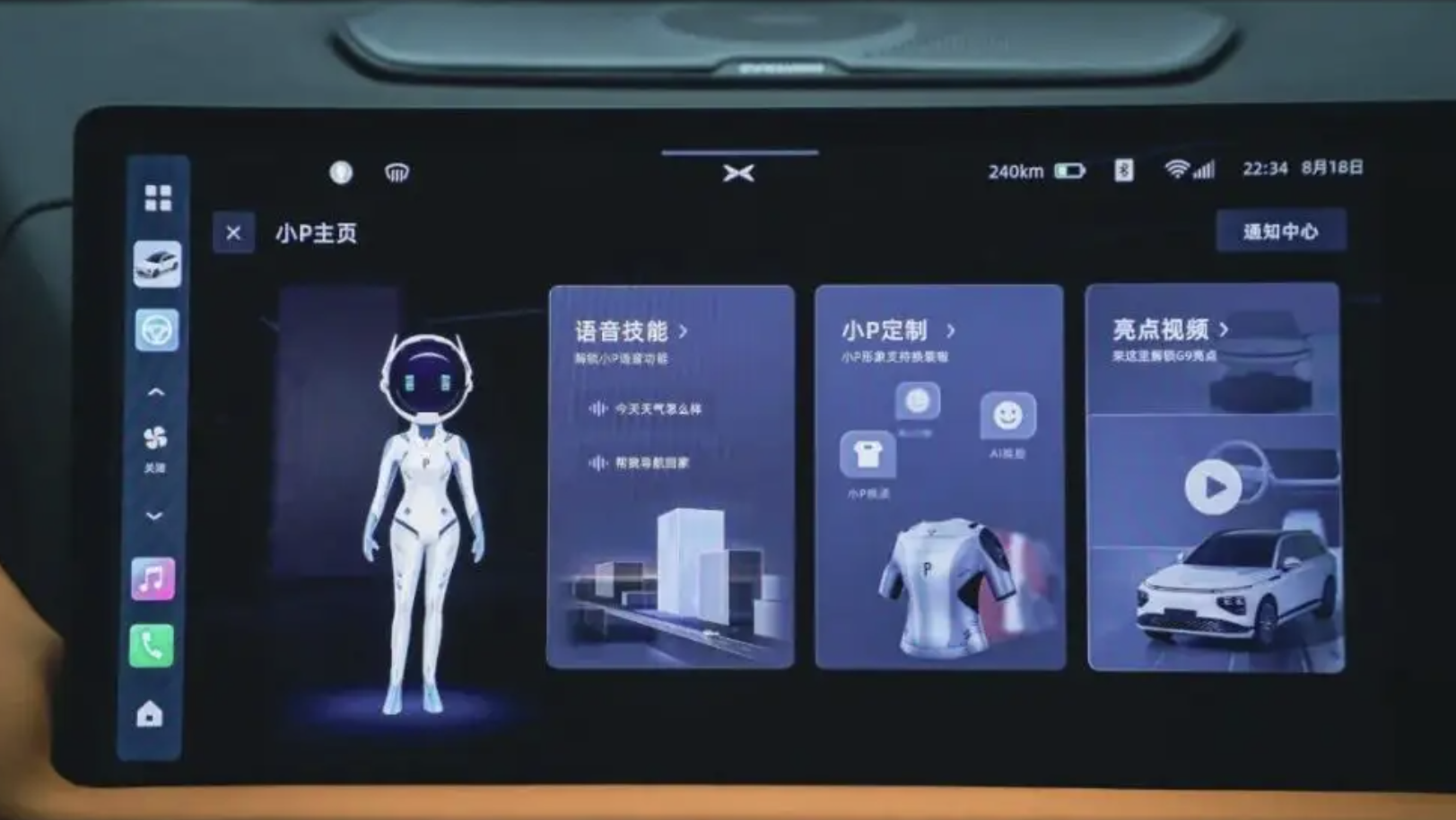
In terms of user initiative in human-car interaction, XPeng G9 has taken a big step forward. Key parameters such as power, brakes, steering, four-wheel drive mode, suspension height, and support are all adjustable.
Moreover, under each parameter, there are rich and multiple gears for adjustment.
Taking four-wheel drive mode as an example, XPeng G9 can freely adjust the power distribution between full-front drive, full-rear drive, 50:50 front and rear, 30:70, and 70:30.
That is to say, facing different road conditions, there are more mature and calm response solutions. For example, the power output form of 50:50 is actually exactly the same as the off-road mode of an off-road vehicle, lacking only a differential lock.
With the adjustable chassis, the potential and playability of G9 far exceed the scope of home-used transportation.
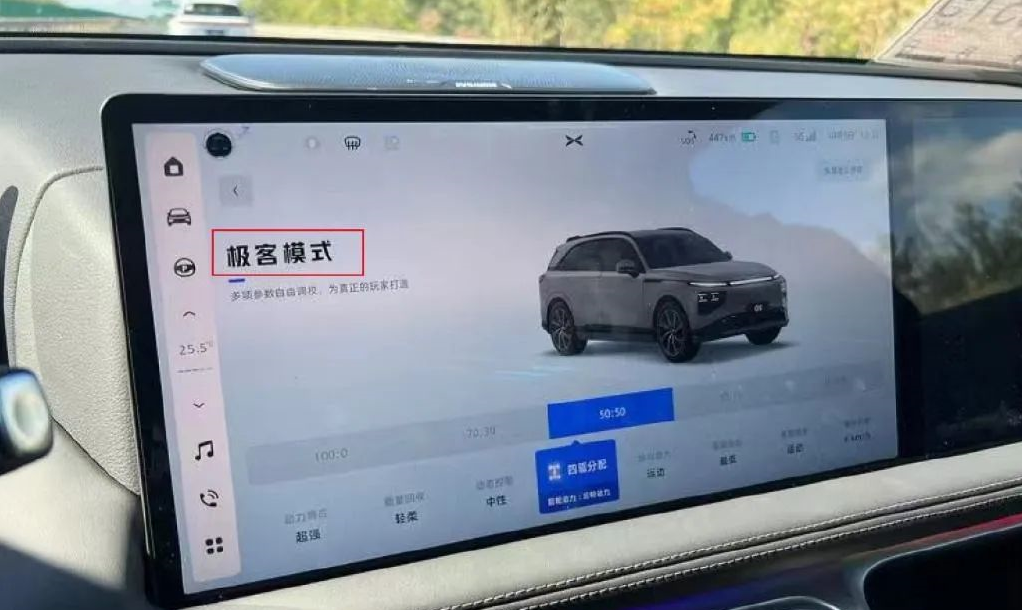
Of course, there are also drawbacks to comment on.
Among the selling points of G9, there is a surround-sound music hall with 28 speakers and a total power of 2250w. It also cooperates with Joe Hisaishi and creates background music specifically for G9, which is indeed stunning.
This is already great, but there is an unnecessary addition.# 小鹏给 G9 设计了一套「身临其境」的视听系统,没别的,就是座椅跟着音效震动。
Say it’s strong, but it’s not as stunning as similar cinemas. Say it’s weak, but the vibration always makes you feel it clearly.
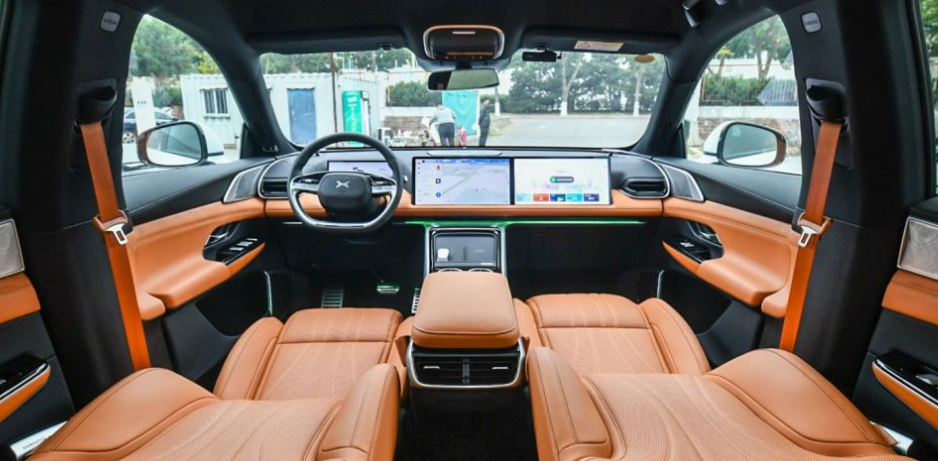
The buttocks are itching.
And whether it’s crawling in a traffic jam, flying on a mountain road, or resting in place, as long as the sound is on, the seat moves.
Yes, the seat vibration cannot be turned off.
Polestar even provided a green bean specifically for everyone to observe the effect of seat vibration…
In short, it is strongly recommended to include the function of turning off seat vibration in subsequent OTA.
Intelligent Driving
Unfortunately, the current test drive car is still an engineering prototype, and the experience of intelligent driving functions has not been opened.
However, intelligent driving is a traditional strength of XPENG.
In terms of hardware solution, G9 is equipped with a total of 30 perception components, including:
2 LiDARs, 5 millimeter-wave radars, 12 ultrasonic sensors, and 11 cameras (2 side front cameras, 1 binocular camera, 2 panoramic cameras, 1 rear camera, 1 side car camera, 2 side front cameras, and 2 side rear cameras).

The underlying computing platform uses 2 NVIDIA DRIVE-Orin chips, with a computing power of 508TOPS.
Obviously, it is for more advanced L3 and L4 level functions.This also indicates that the XPeng G9, which will be launched in 2022 and delivered in 2023, has already embedded the requirements of future intelligent driving systems for the next several years in terms of intelligent driving hardware configuration.
Xpilot has been iterated to version 3.0, with assisted driving functions covering parking and high-speed scenarios, and including advanced capabilities such as memory parking and high-speed navigation assistance.
Xpilot 3.5 is currently in testing stage, and the most significant change is the launch of city NGP functionality.
This function can autonomously identify traffic lights, pedestrians, road conditions, and other information on complex urban roads, and can complete complex tasks such as unprotected turns, roundabouts, and mixed vehicle and pedestrian traffic.
With the support of high-precision maps, city NGP can navigate autonomously, greatly reducing the user’s driving burden.
Combined with Xpilot’s previous autonomous parking, high-speed NGP, and other functions, XPeng Motors has achieved industry-leading “end-to-end” and “three-domain integration” intelligent driving capabilities.
Starting from a parking lot and arriving at another parking lot, users can use advanced auxiliary driving throughout the journey.
What’s the difference with G?
Finally, let’s summarize the XPeng G9.
From a longitudinal perspective, G9 is not only the strongest expression of XPeng’s intelligent strength, but also a huge leap forward in XPeng’s vehicle engineering.
It is mainly designed for home use while also considering a certain sportiness.
Moreover, the linear response of the throttle and brake, the precision and strength feedback of steering during daily driving, are much better than the previous generation flagship P7.
Especially in terms of chassis support and comfort, G9 has found a good balance point.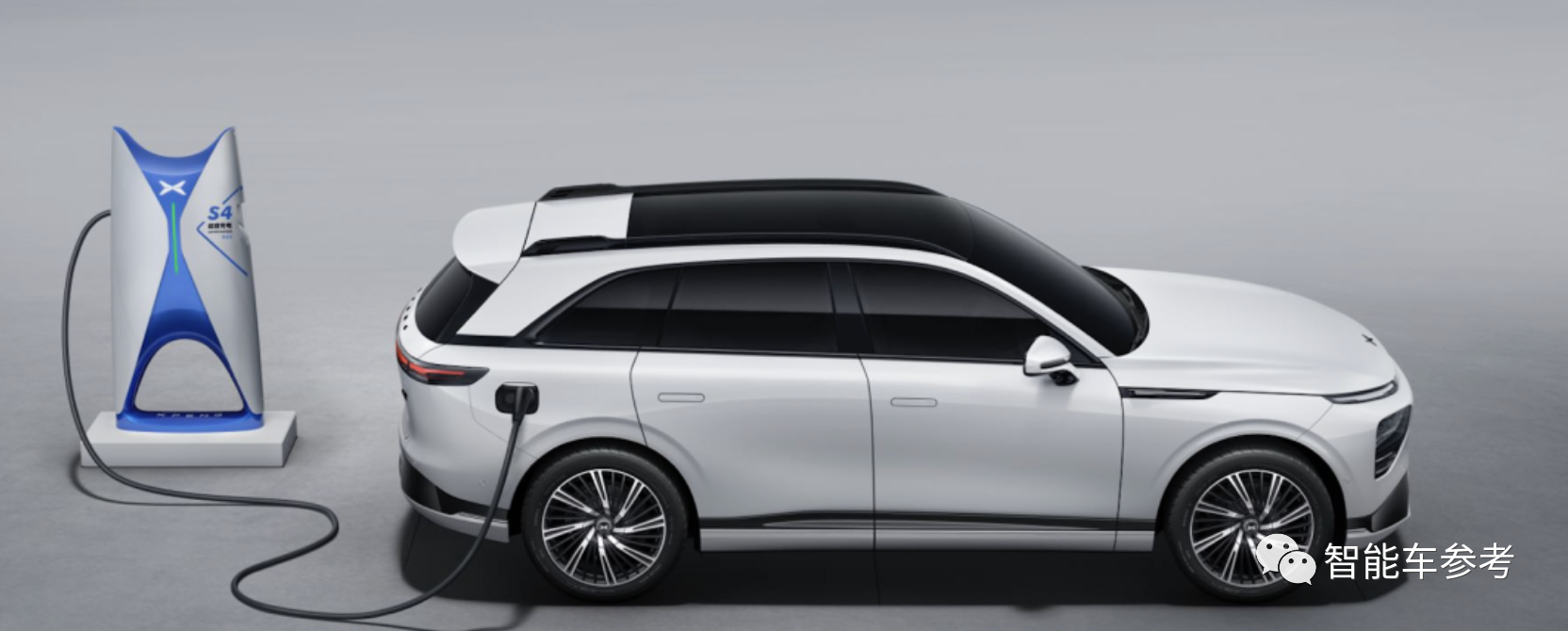
However, there are drawbacks.
The driving mode is more conservative and creates potential risks;
The body sway suppression during low-speed suspension is not thorough;
The seat vibration function is not practical and cannot be turned off.
Furthermore, the spaciousness of the 5-seater model is only moderate.
Compared with the overall vehicle size, the rear space is just enough but not luxurious.
Therefore, in terms of horizontal comparison, the biggest competitors and benchmark models for a series of new cars, including L7, 8, 9, and XPeng G9, prioritize the experience of front-seat passengers by making full use of resources.
In contrast, LI (Ideal) focuses on providing the best experience to the rear-seat passengers, even arguably putting all the good stuff in the backseat.
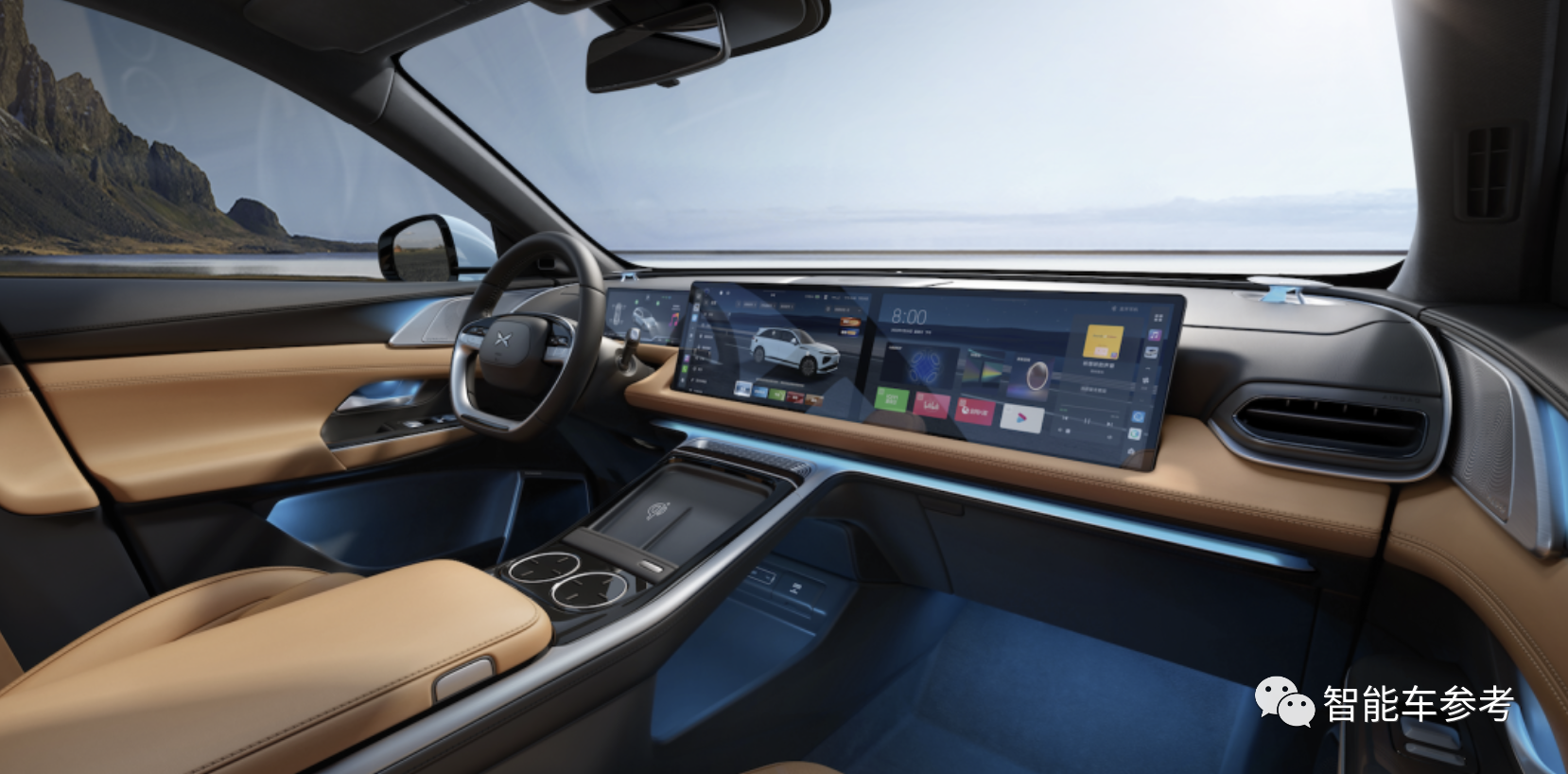
In terms of the number of screens, size, and interaction methods, XPeng G9 does not have any outstanding selling points compared to Ideal.
So, what kind of users are suitable for buying XPeng G9?
Firstly, users who are shifting from traditional fuel-based SUVs such as Toyota Highlander, Volkswagen Touareg and Acura RDX towards new energy vehicles. XPeng G9 is far ahead in terms of energy consumption costs, technological configuration, and driving experience.
Among the potential new energy vehicle users, XPeng G9 may be more attractive to users with less than 4 family members or those who are not fond of too many large screens in the car.
Finally, XPeng Automobile also has its own “moat”, which is its leading level of intelligence, and has cultivated a group of loyal fans accordingly.
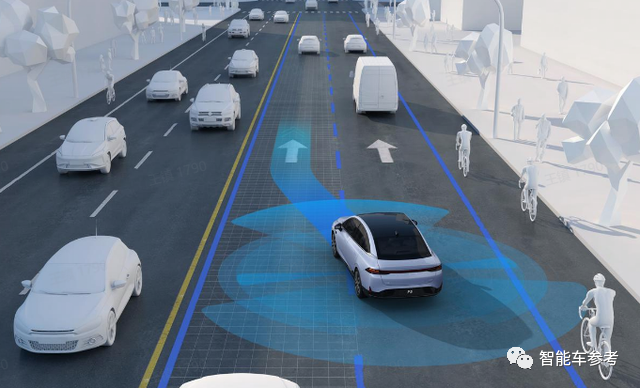 After all, except for Tesla, there is no other company in the world that has the ability to develop all core technologies of intelligent cars by itself.
After all, except for Tesla, there is no other company in the world that has the ability to develop all core technologies of intelligent cars by itself.
In China, there is no other intelligent car manufacturer except Xpeng that can provide a leading experience in both intelligent driving and intelligent cabin, and adapt to Chinese road conditions and Chinese user habits.
— The end —
This article is a translation by ChatGPT of a Chinese report from 42HOW. If you have any questions about it, please email bd@42how.com.
